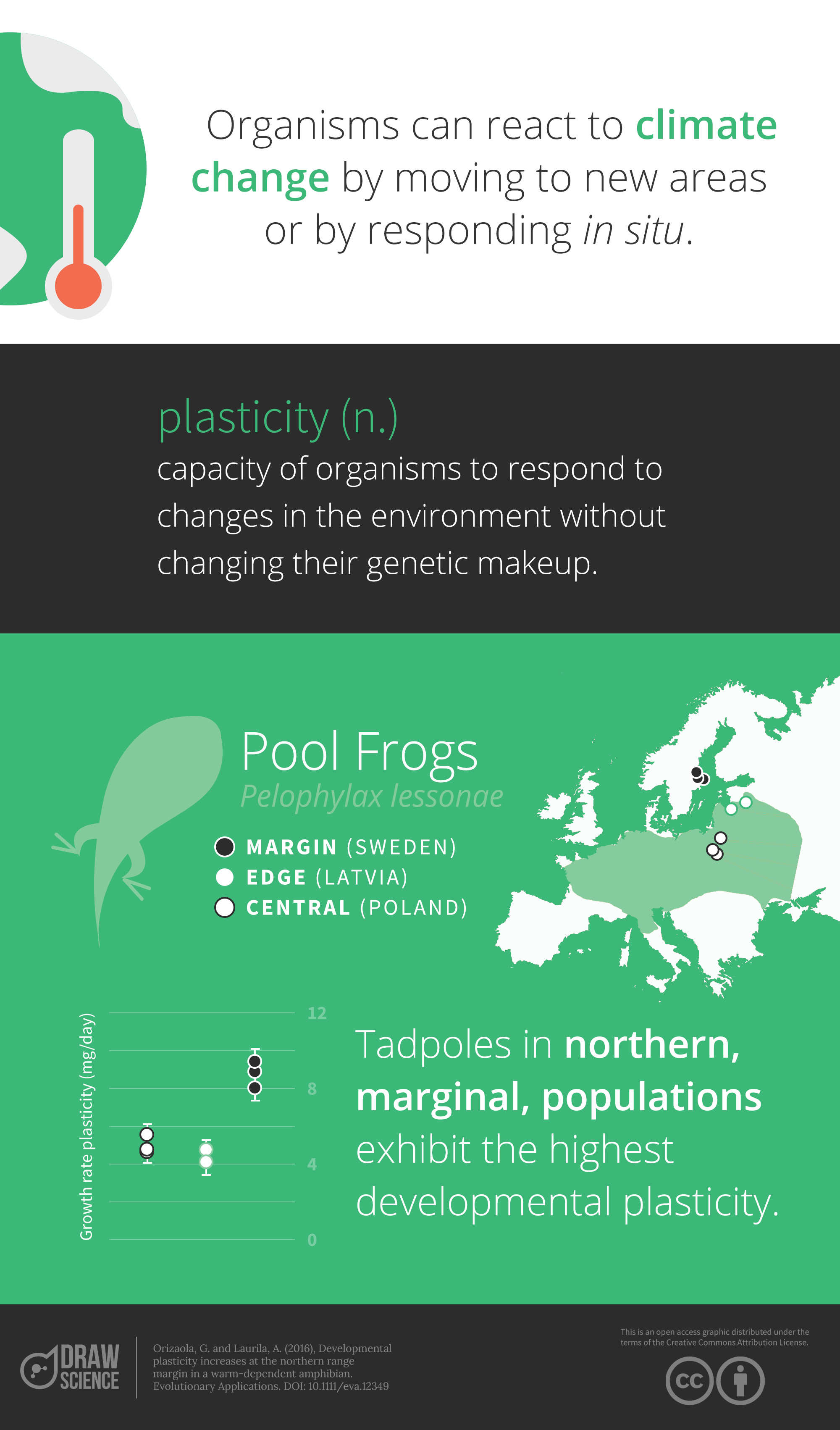LAY SUMMARY
Organisms can respond to climate change threats by moving to new areas or by responding in situ to the new environmental conditions. Plasticity, the capacity of organisms to respond to changes in environment by adjusting their phenotypes to the new conditions without changing their genetic composition, can be crucial for responding to climate change. This study reveals the maintenance of high levels of developmental plasticity in isolated, marginal populations, suggesting that they may be better able to respond to environmental change than often predicted.
ABSTRACT
Accurate predictions regarding how climate change affects species and populations are crucial for the development of effective conservation measures. However, models forecasting the impact of climate change on natural environments do not often consider the geographic variation of an organism’s life history. We examined variation in developmental plasticity to changing temperature in the pool frog (Pelophylax lessonae) across its distribution by studying populations from central areas (Poland), edge populations (Latvia) and northern marginal populations (Sweden). Relative to central and edge populations, northern populations experience lower and less variable temperature and fewer episodes of warm weather during larval development. Plasticity in larval life-history traits was highest at the northern range margin: larvae from marginal populations shortened larval period and increased growth rate more than larvae from central and edge populations when reared at high temperature. Maintaining high growth and development under the scarce spells of warm weather is likely adaptive for high-latitude populations. The detection of high levels of developmental plasticity in isolated, marginal populations suggests that they may be better able to respond to the temperature regimes expected under climate change than often predicted, reflecting the need to incorporate geographic variation in life-history traits into models forecasting responses to environmental change.
CITATION
Orizaola, G. and Laurila, A. (2016), Developmental plasticity increases at the northern range margin in a warm-dependent amphibian. Evolutionary Applications, 9: 471–478. doi: 10.1111/eva.12349
